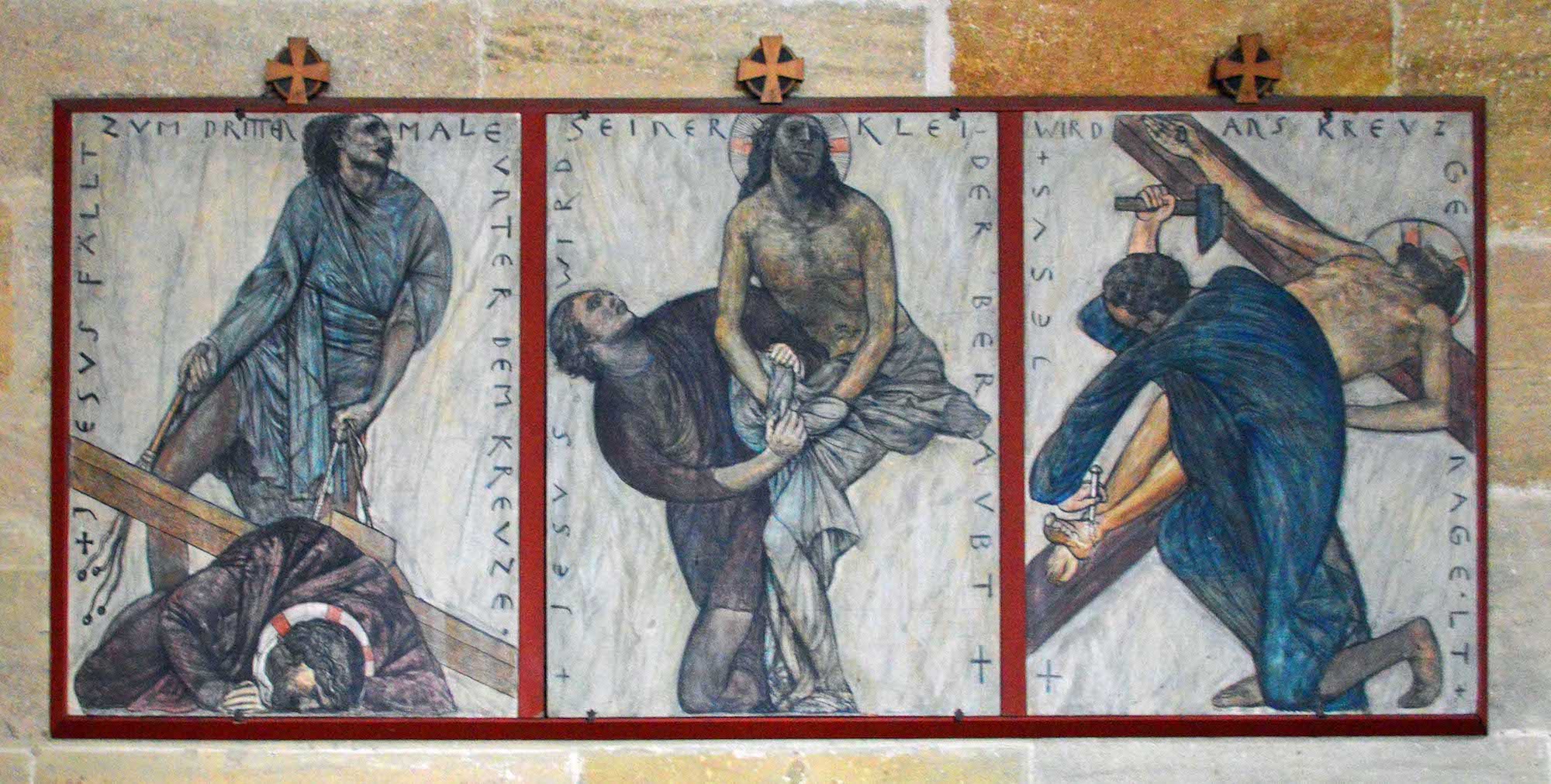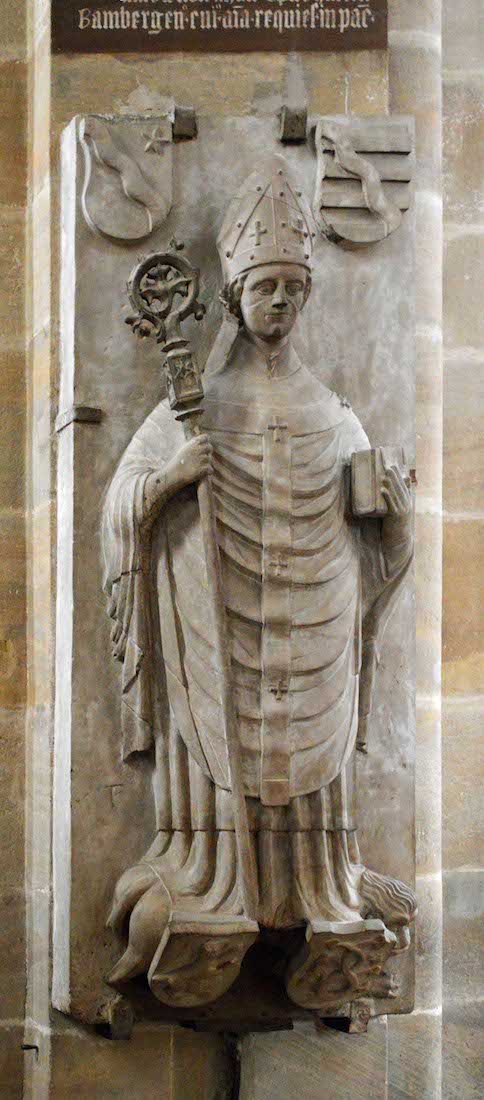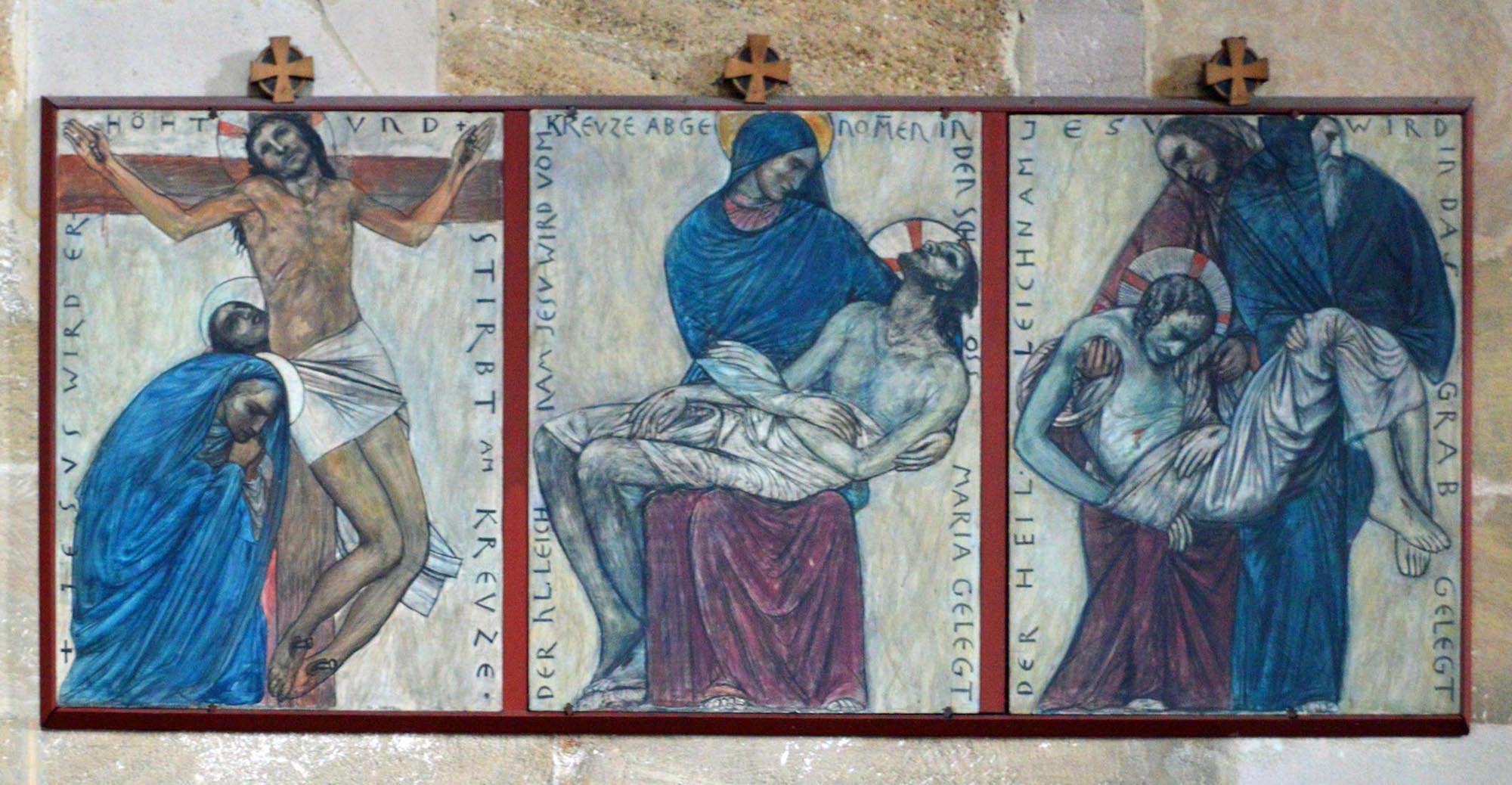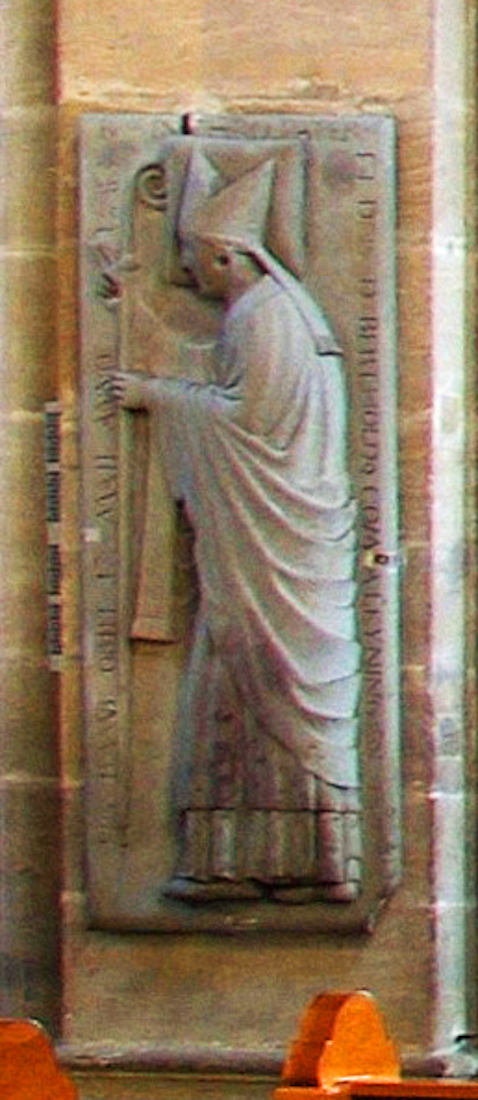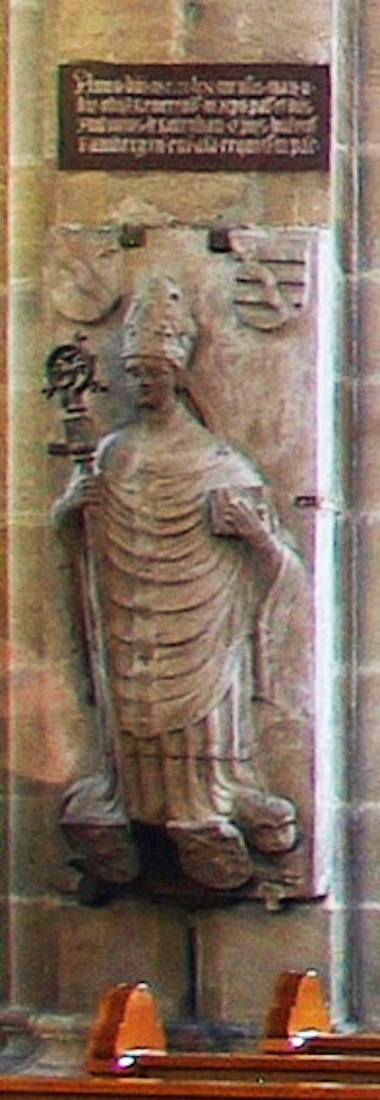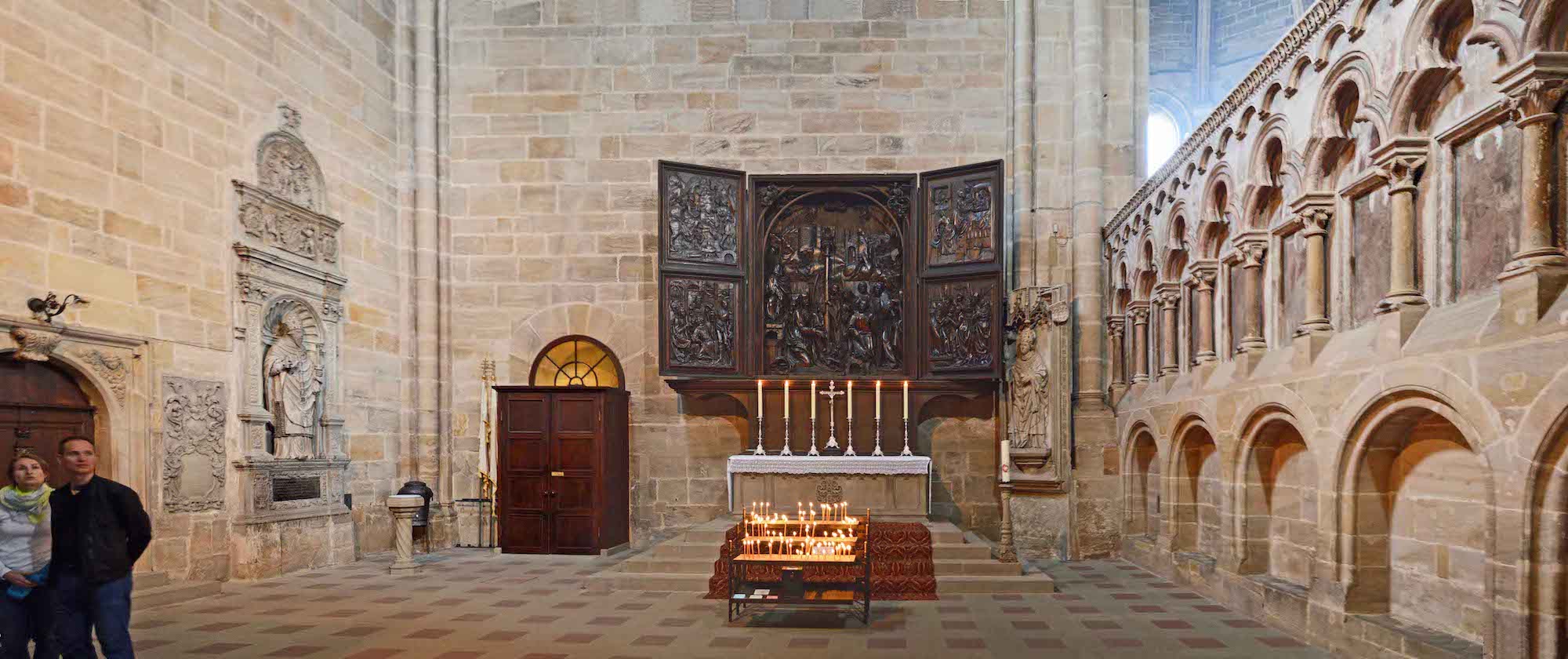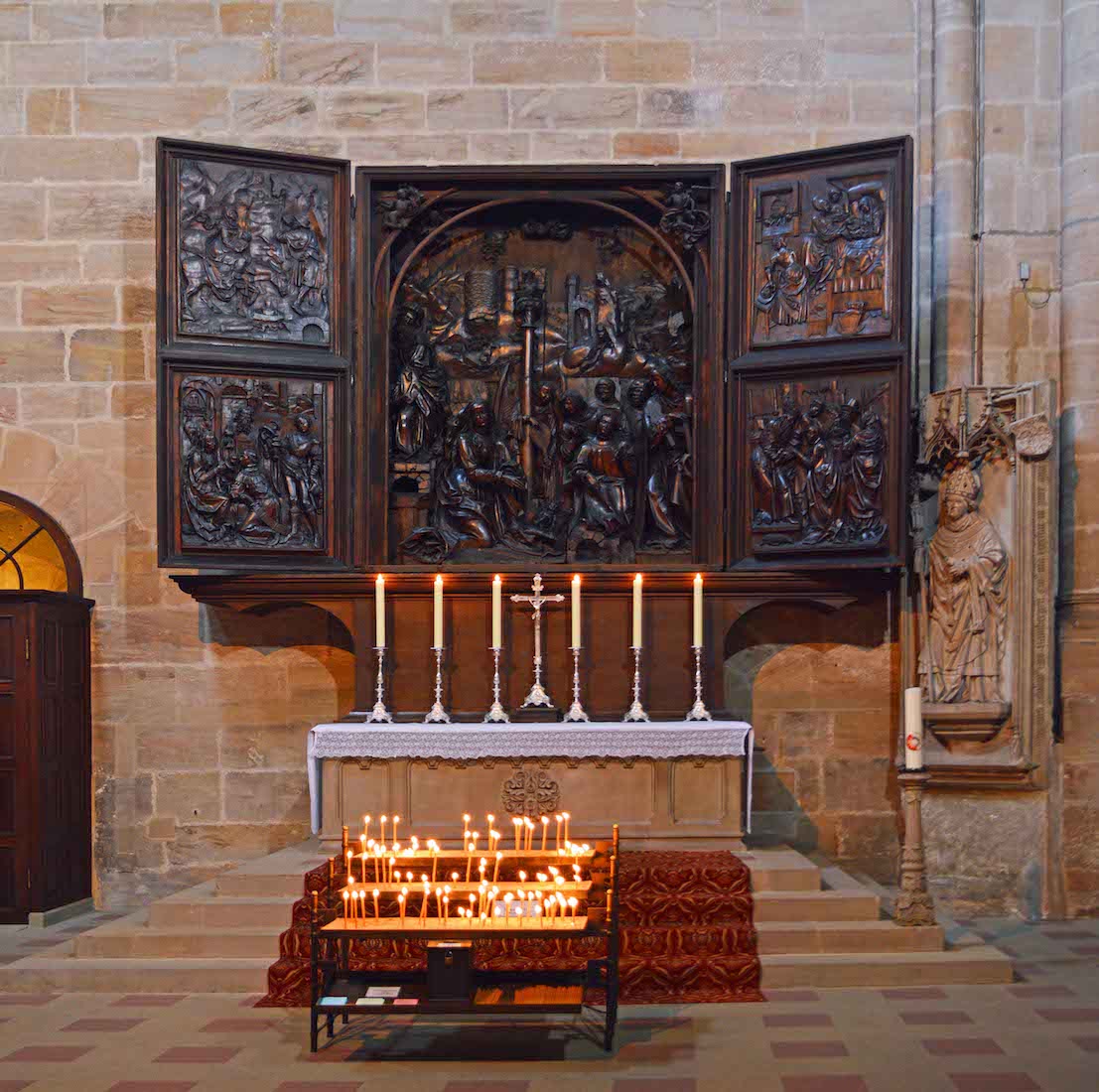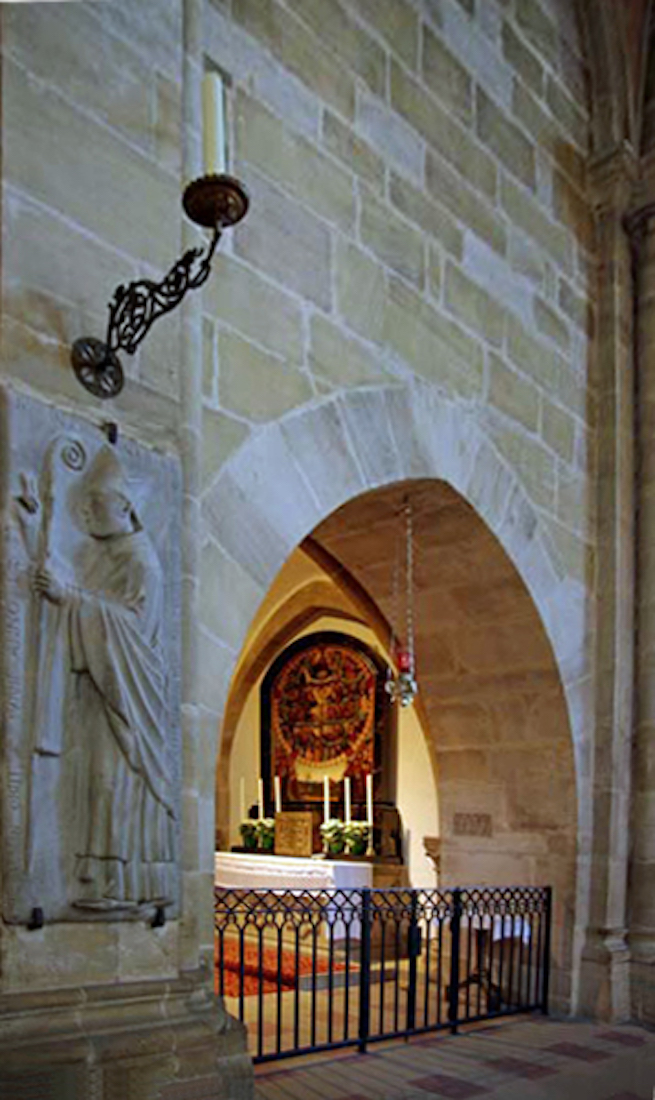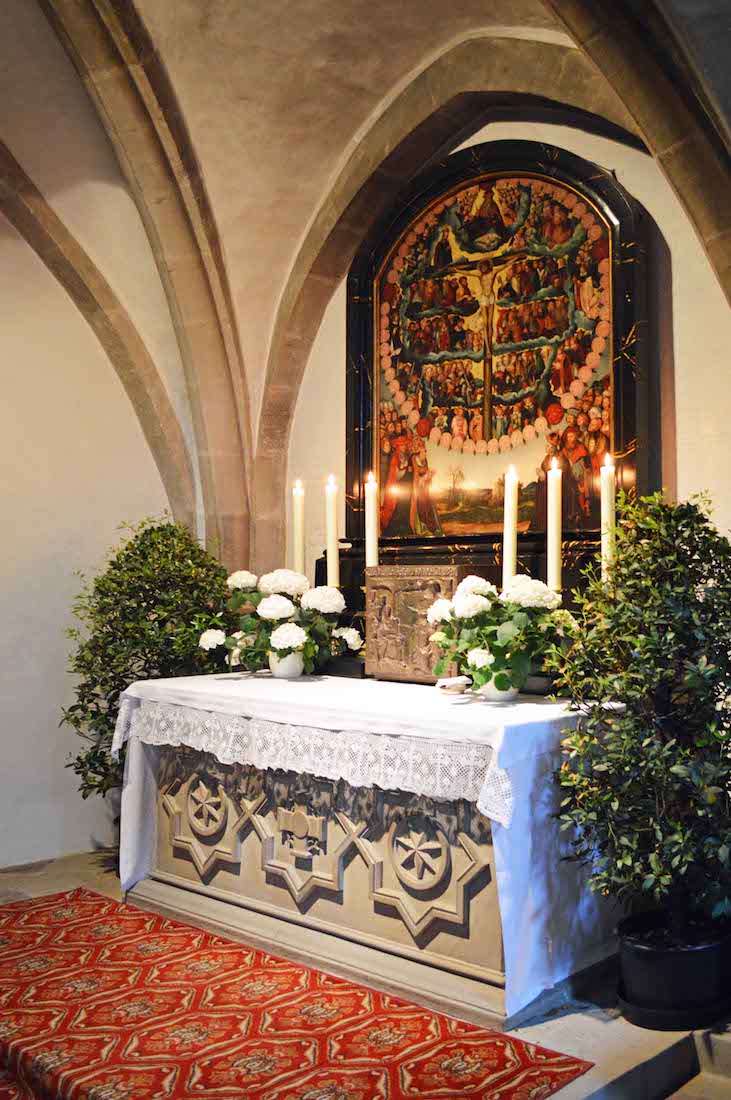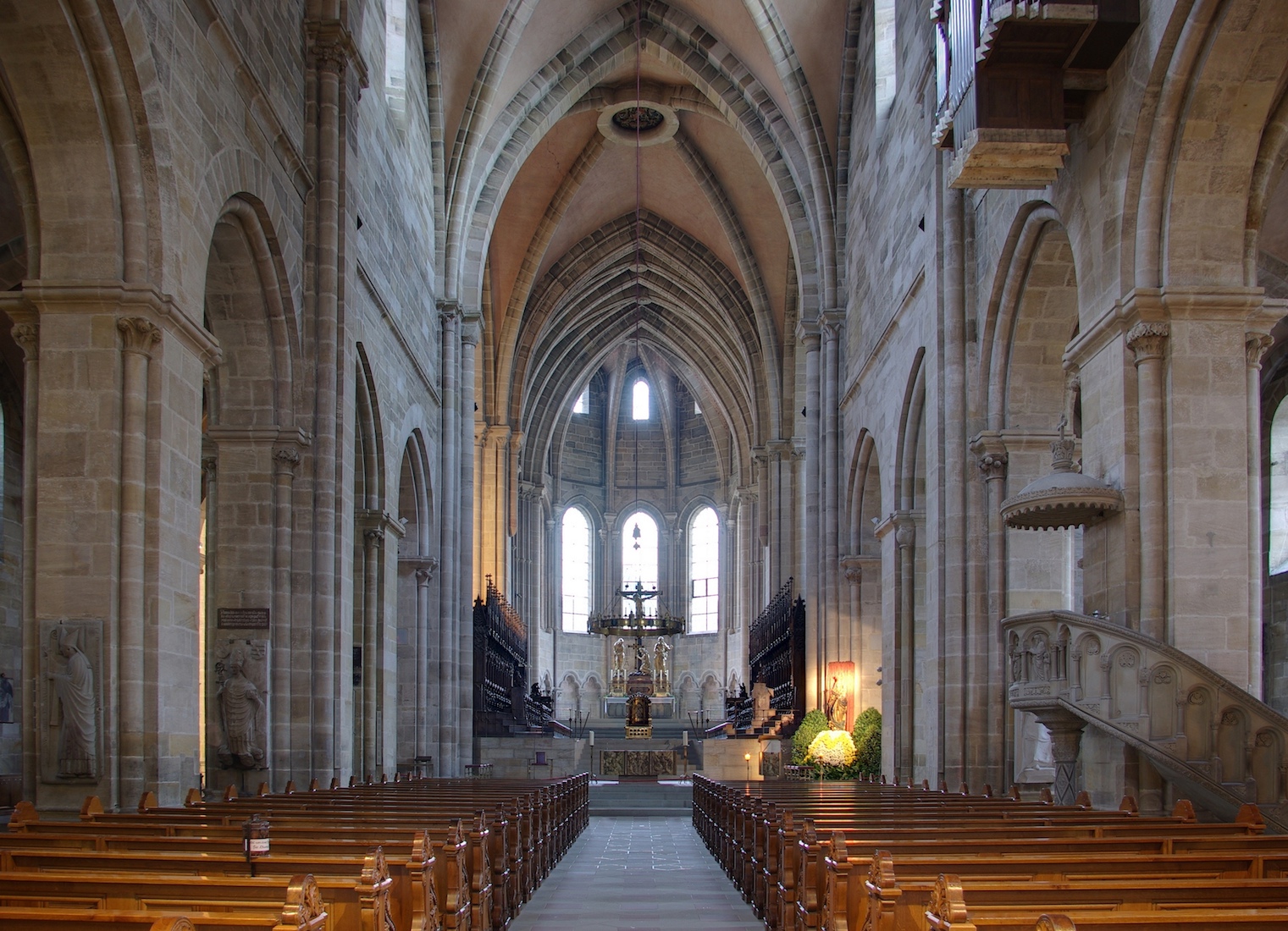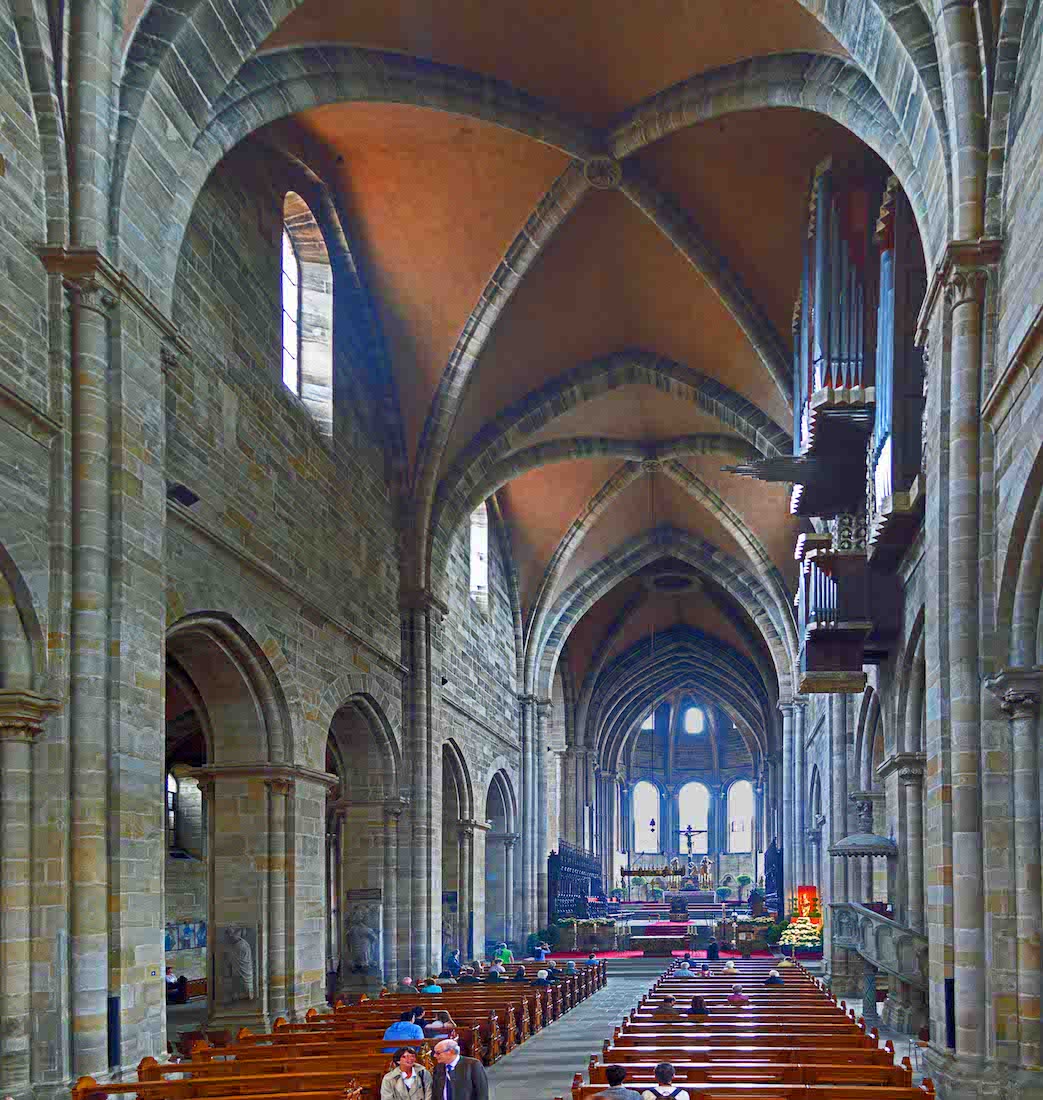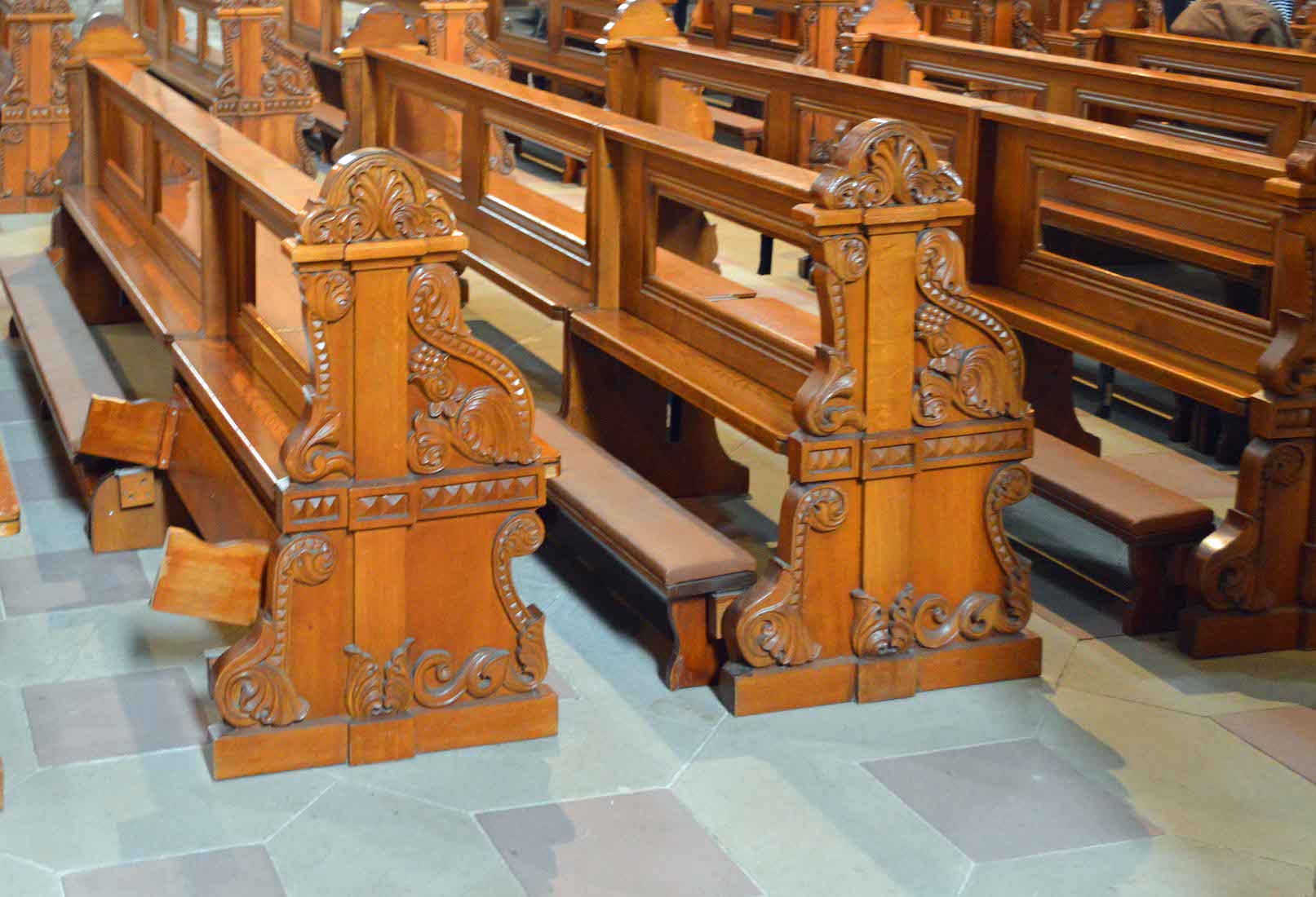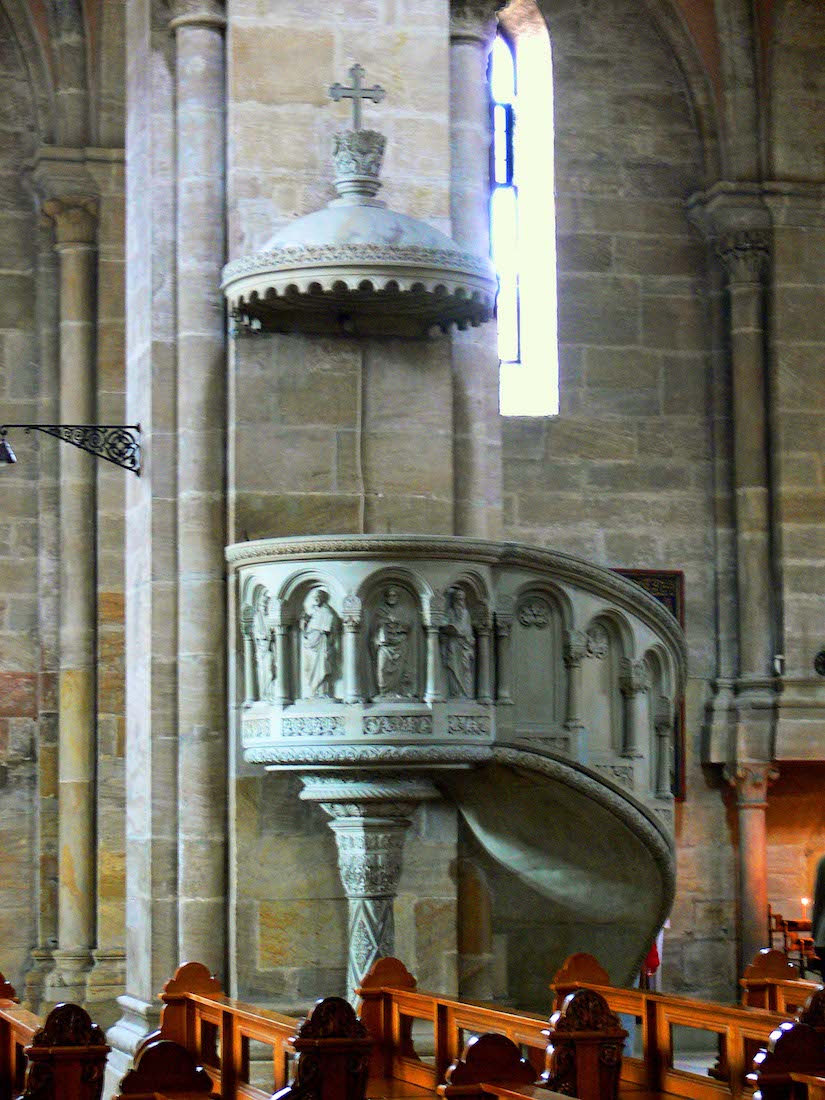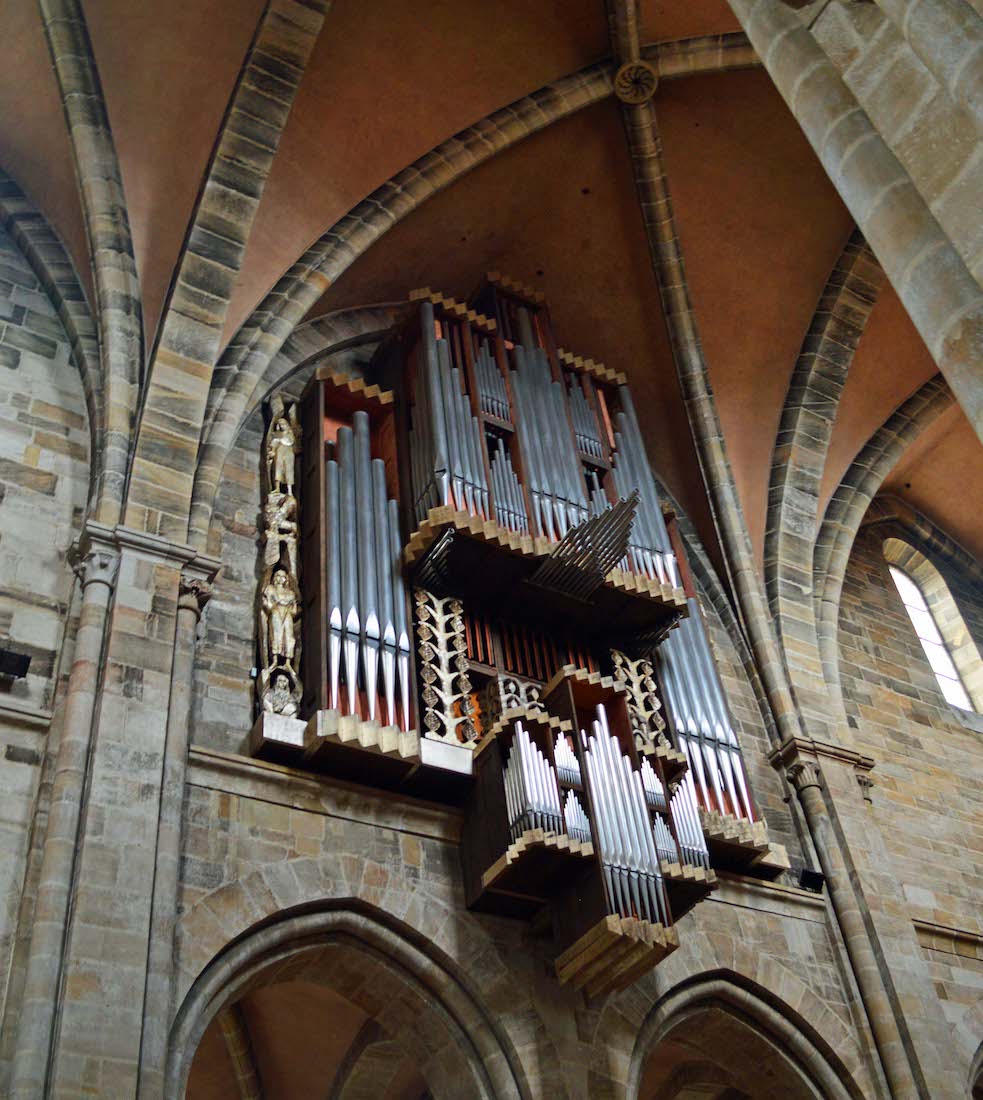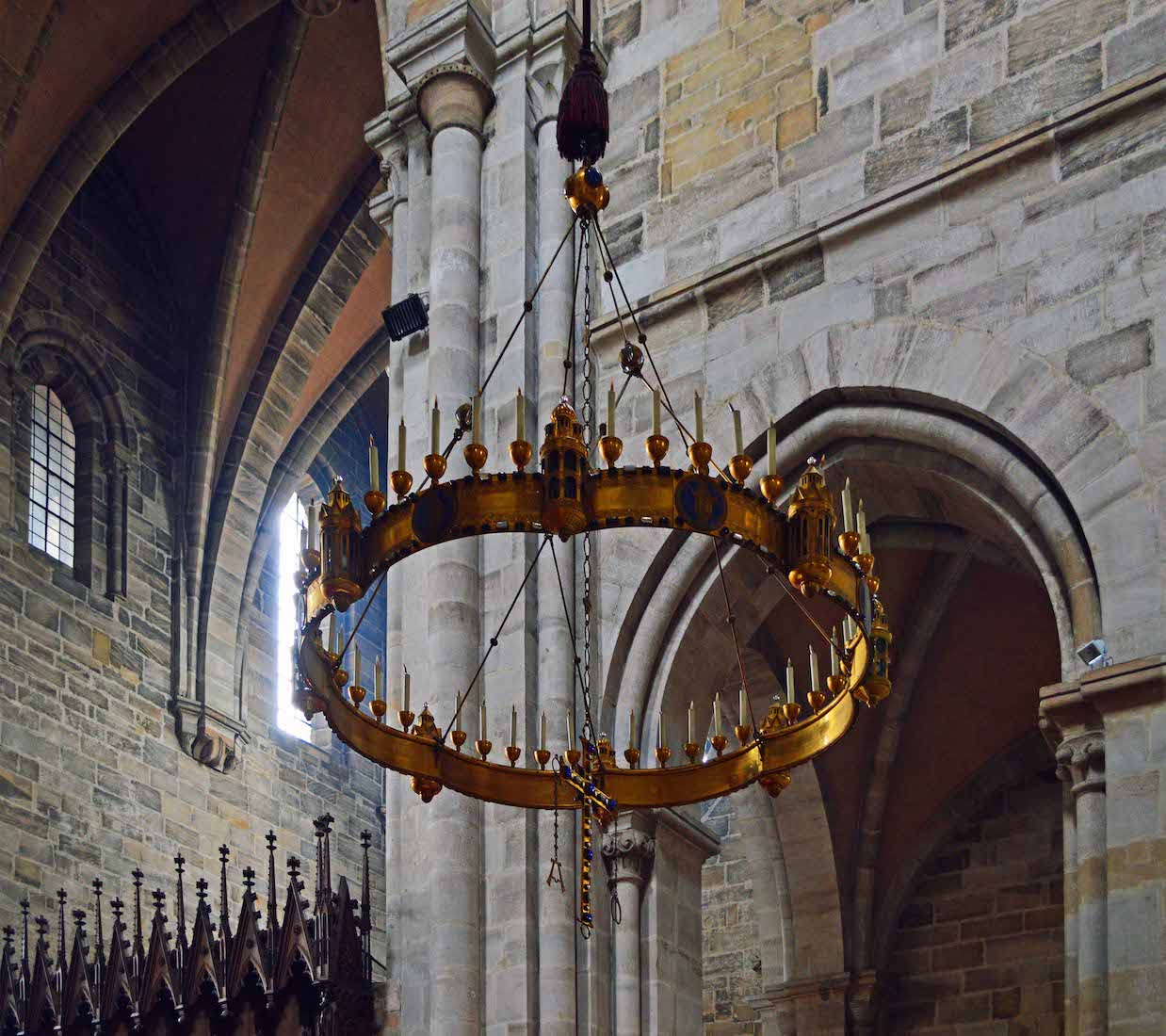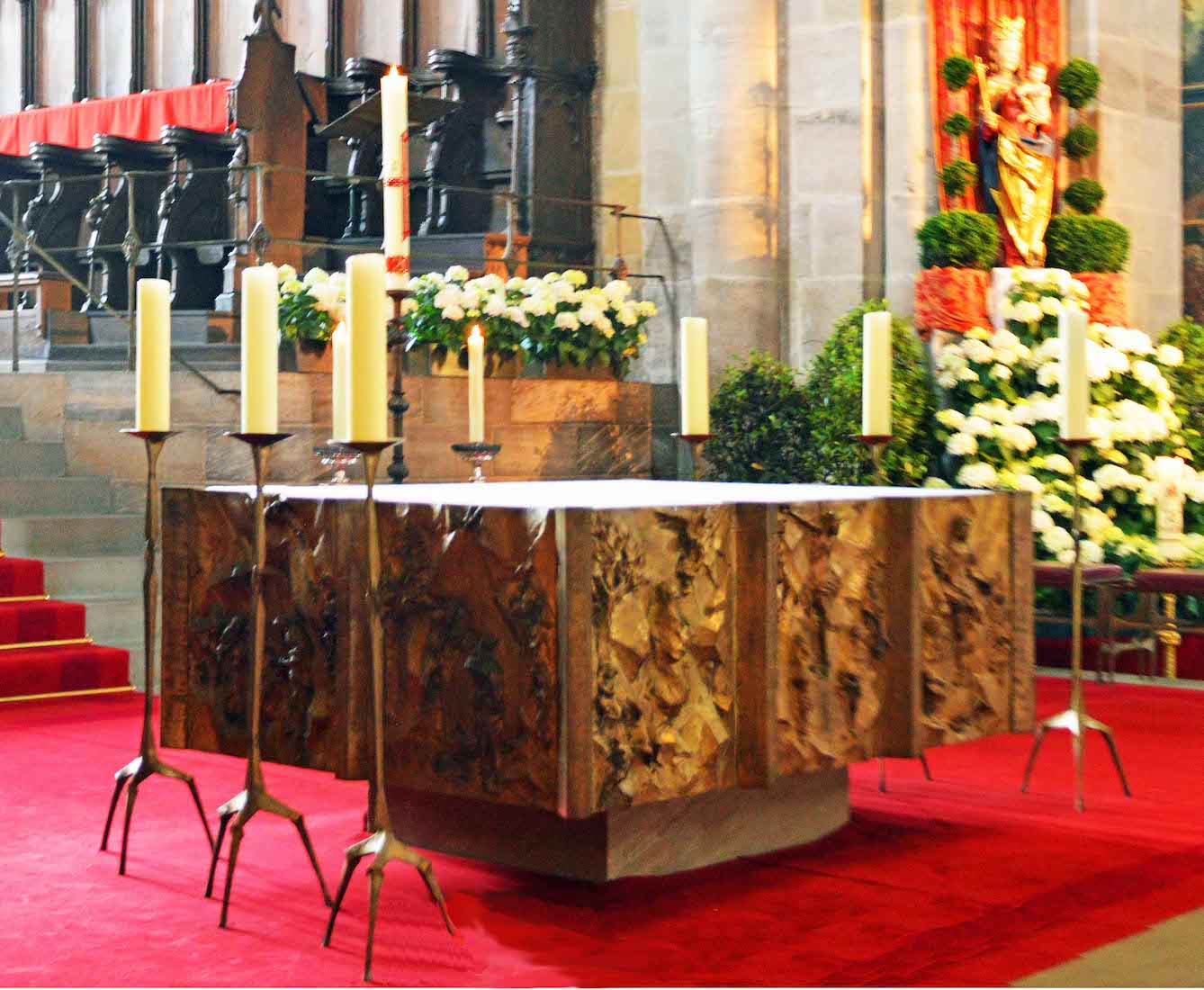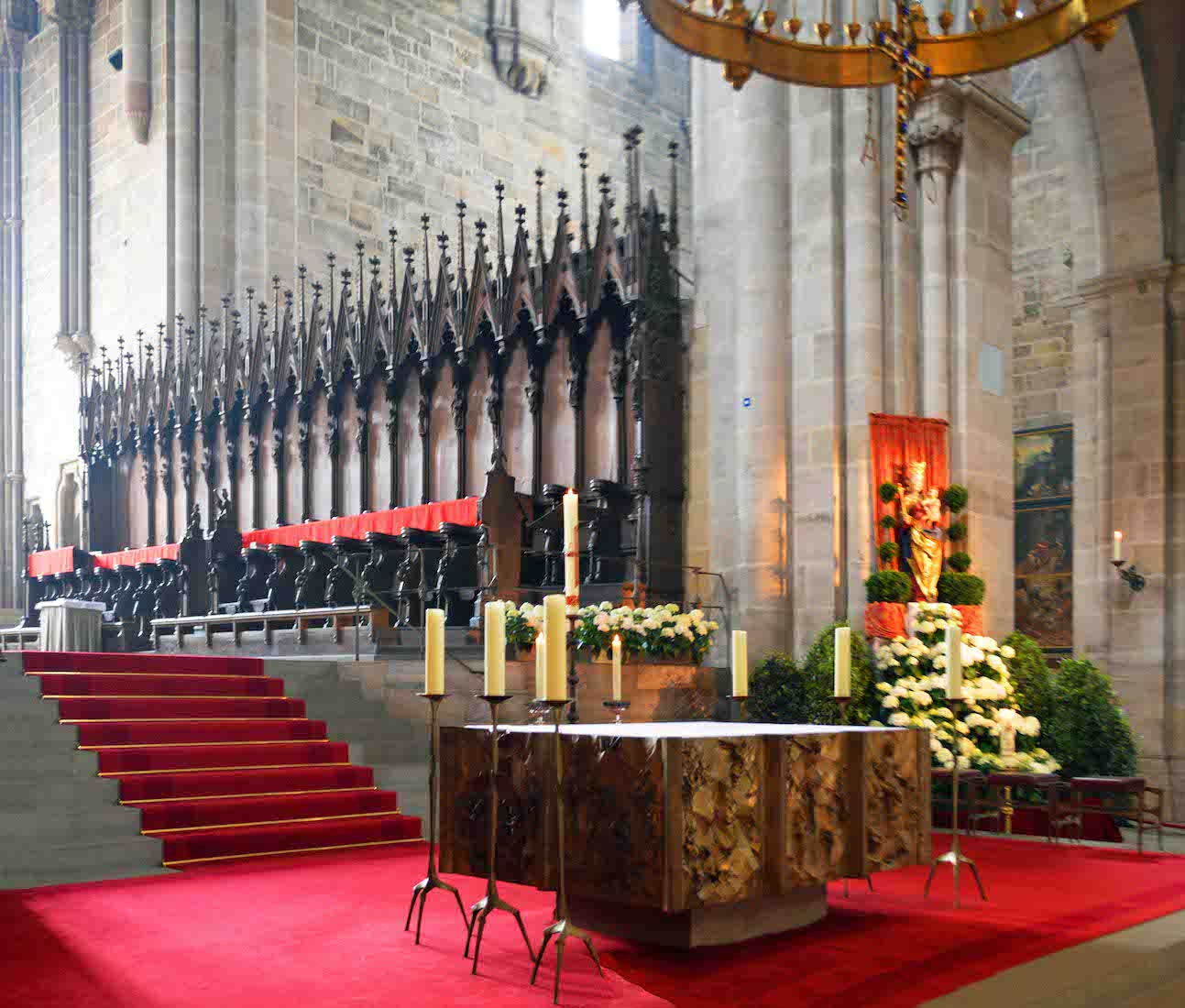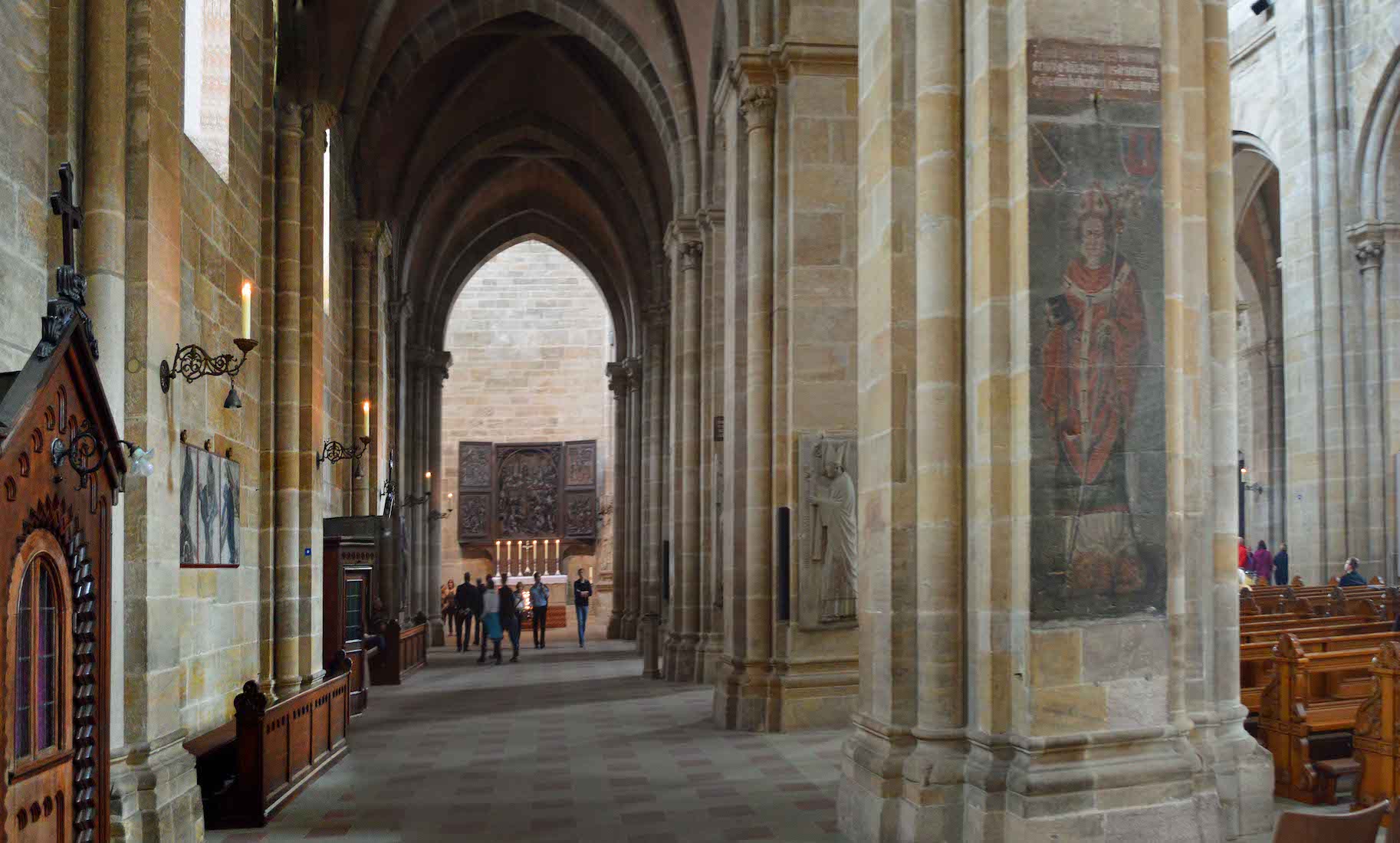
This is our way forward! Notice the decoration and effigies on the columns at right, the stations of the cross in threes on the wall at left, and the altarpiece in the distance. PLAN
42. COLUMN PANEL
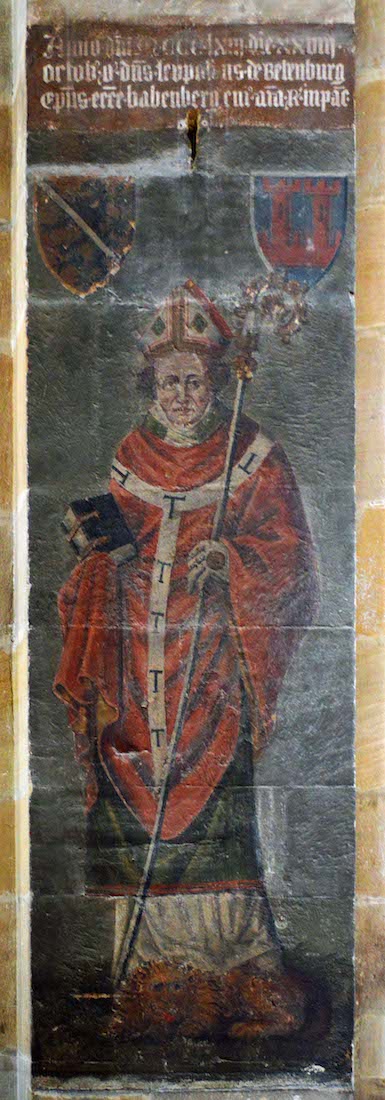
The text is difficult to decipher, but perhaps this is Leopold of Bebenberg, who became Bishop of Bamberg in 1363.
43. STATIONS OF CROSS
There are several panels along the North wall with the Stations of the Cross grouped together in threes. These would be: IX Jesus falls for the third time; X Jesus is stripped of his garments; XI Jesus is nailed to the Cross.
44. EFFIGY
Working our way along the columns separating the nave from the North aisle, we come to this effigy. Obviously a bishop of Bamberg, but the truncated sign is not helpful ... .
45. STATIONS OF THE CROSS
Continuing in an Easterly direction, another set of three Stations of the Cross. Here we have: XII Jesus dies on the cross; XIII Jesus is taken down from the cross; XIV Jesus is laid in the tomb.
46. BISHOP BERTHOLD EFFIGY
The effigy on the third column from the West is that of Berthold of Leiningen zu Leiningen who was Bishop of Bamberg from 1257 to 1285. Berthold was born to Friedrich II Graf zu Leiningen and Agnes zu Leiningen (born von Eberstein).
47. BISHOP EFFIGY
On the fourth column of the North aisle is a final effigy, but the resolution is not sharp enough for me to identify the Bishop remembered here.
48. NORTH TRANSEPT
The North aisle ends in the North transept. An art treasure here is the Lady Altar by Veit Stoß of 1520. Originally, it had been destined for the Carmelite convent in Nuremberg where the artist’s son, Andreas Stoß, was working as a prior. Veit Stoß made the wing altar out of limewood and finished his work in 1523. The altar is not complete: an upper and a lower part were originally planned.
49. LADY ALTAR
In the middle section, the altar depicts the Christmas story. One can see the Virgin Mary with Jesus, on the left Joseph joins them. Behind Mary angels play music and in the background one can see people climbing over fences to be closer to the event. The relief plates on both wings depict Christ’s birth (top right), and Jesus’ visits to the temple (bottom right), then the escape of the Holy Couple (top left) and the Three Kings worshipping Jesus (bottom left).
50. BLESSED SACRAMENT CHAPEL
Tucked away in the corner of the North transept is the Blessed Sacrament Chapel, also called St Anthony’s Chapel (Antoniuskapelle). This chapel is reserved for prayer before the Blessed Sacrament.
51. ROSARY PAINTING
The Chapel is not accessible to the public, but the rosary painting is visible. This painting is attributed to Lucas Cranach the Elder (c. 1472 – 1553) who was a German Renaissance painter and printmaker who used woodcuts and engraving.
52. CHAPEL MADONNA
This stylized Madonna and Child is on the wall of the Chapel.
53. CENTRAL NAVE
We leave the North aisle and return to the central nave. We notice the North column effigies on the left, and the pulpit on the right with organ above. A special illuminated display is to the left of the Eastern choir.
54. CENTRAL NAVE
Another view of the central nave. The Cathedral is quite plain in its internal decoration.
55. PEWS
The Cathedral has two choirs that are both obviously still in use. But in which direction are the pews arranged then? Ingeniously, the seats of the benches can be pushed through, so that the pews can be used in either direction.
56. PULPIT
There are four figures carved into the pulpit balustrade and a crown and cross on the canopy above. Likely candidates for the four figures are the Four Evangelists: Matthew, Mark, Luke and John.
57. ORGAN
The Cathedral organ is situated directly above the pulpit. The Cathedral first had an organ in 1415. The one that was built in 1868 gave many problems and had to be rebuilt five years later, but it was kept until 1940 because of its pleasing sound. The organ that is present in the Cathedral today was built in 1976 by the organ builder Rieger. It has four manuals and pedalboard. All the organs during the Cathedral’s history were built against the South wall because the sound was best there.
58. CHANDELIER
Bamberg Cathedral does not have a true Crossing because of the Eastward placement of the transept. This grand but rather plain chandelier marks the transition from nave to East choir.
59. NAVE ALTAR
Bamberg Cathedral has an abundance of altars, but this nave altar is the one regularly used for celebration of the Eucharist.
60. ST GEORG’S CHOIR SOUTH
Here we look across the nave altar to the Southern choir stalls. To the right is a special display. The front panels of the altar illustrate a Crucifixion scene.


